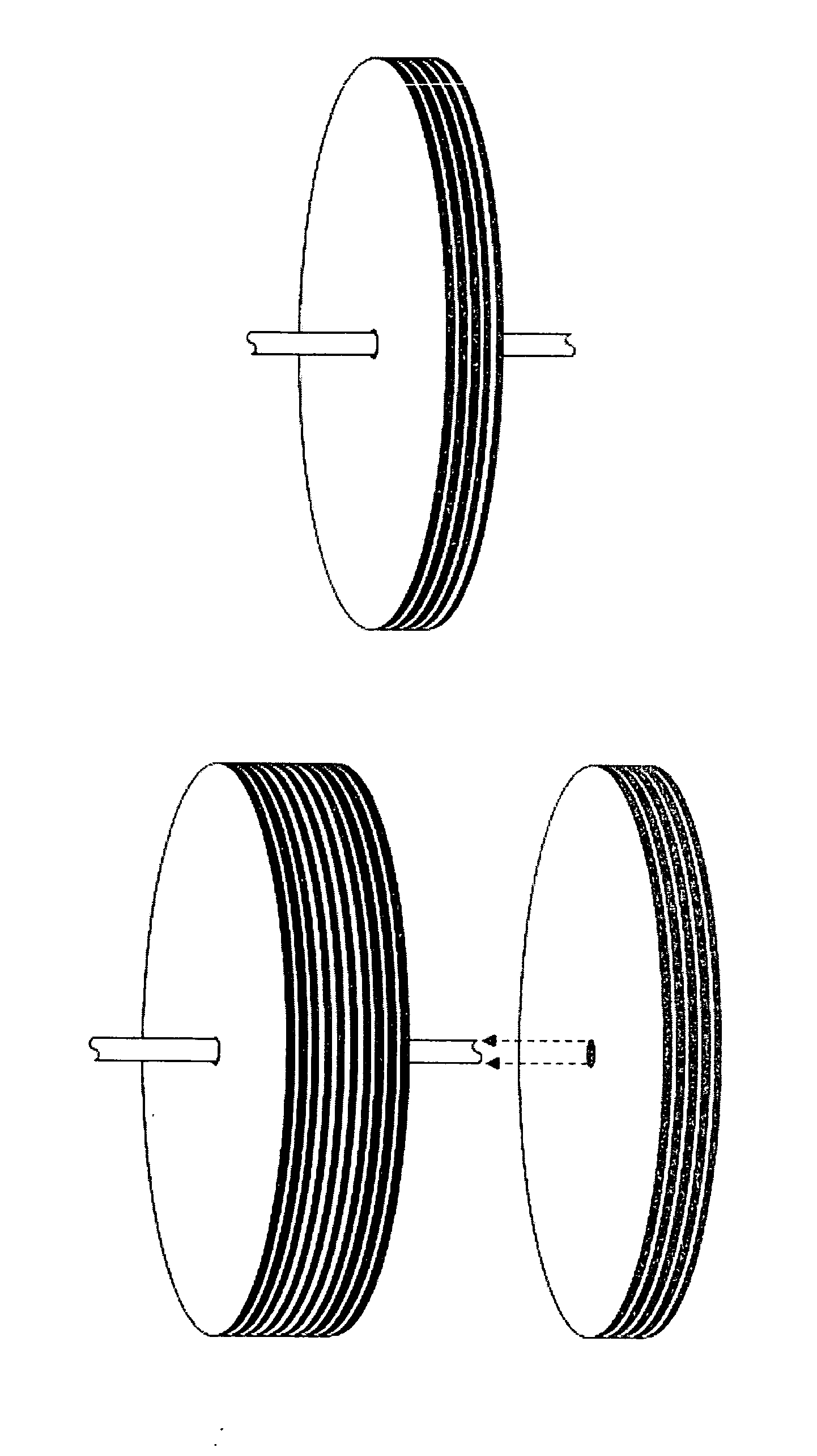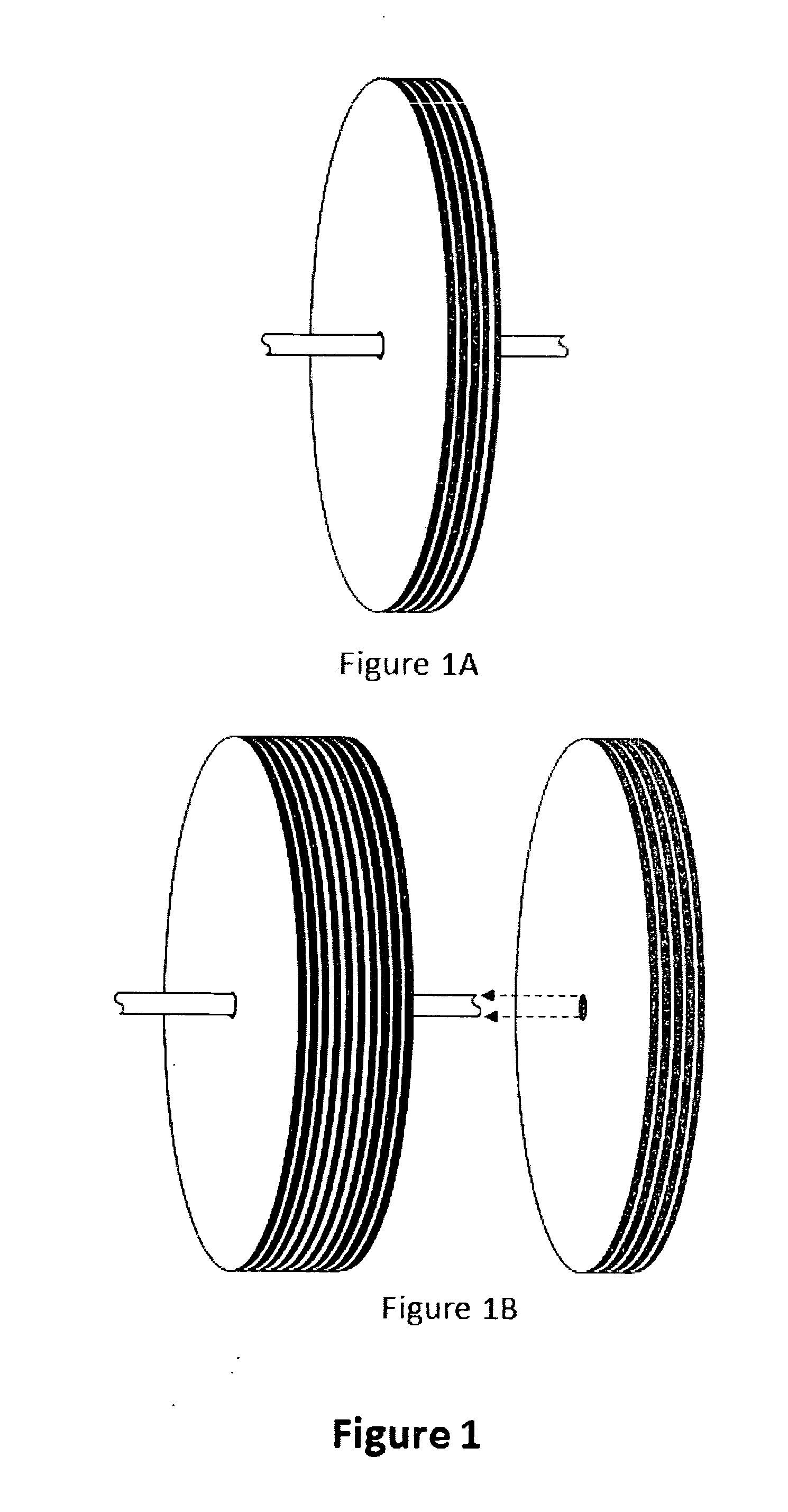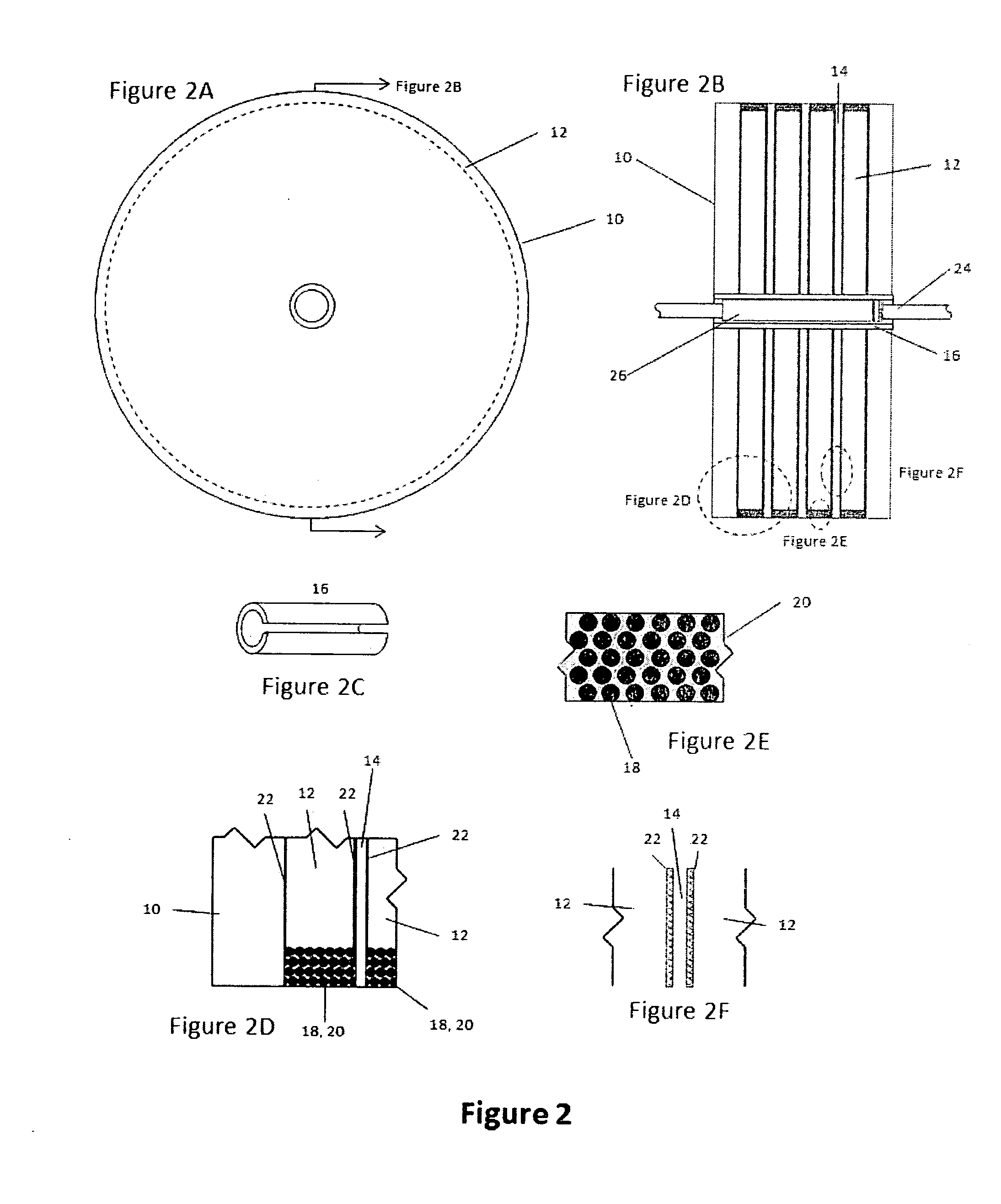Hybrid metal fiber flywheel
a metal fiber and flywheel technology, applied in the field of flywheels, can solve the problems of increasing the speed of the flywheel and ultimately reaching the physical speed limit, failure to explodely release all its stored energy instantaneously, and reducing the functional capability of the assembled flywheel. , to achieve the effect of increasing the structural capability and increasing the functional capability of the assembled flywheel
- Summary
- Abstract
- Description
- Claims
- Application Information
AI Technical Summary
Benefits of technology
Problems solved by technology
Method used
Image
Examples
Embodiment Construction
[0030]FIG. 1a shows a laminated fiber wrapped flywheel module mounted on a shaft. FIG. 1b shows two of the same laminated fiber wrapped flywheel modules mounted on the same shaft with a third module ready to be mounted on the same shaft. Each module, when mounted on the shaft is a complete flywheel and contains a given amount of stored energy. Its functional characteristics are established by its radius and the mass that results from the number of laminations. By adding modules to a common shaft the functional capability of the total flywheel assembly may be increased in increments to meet the design objective. Moreover mounting space may be an issue and to accommodate such limitation the radius of the module may be altered as necessary to fit the available space. The modular assembly with the ability to select the desired radius provides enormous application flexibility.
[0031]The flywheel module is an assembly using alternate circular laminations of different density materials bond...
PUM
 Login to View More
Login to View More Abstract
Description
Claims
Application Information
 Login to View More
Login to View More - R&D
- Intellectual Property
- Life Sciences
- Materials
- Tech Scout
- Unparalleled Data Quality
- Higher Quality Content
- 60% Fewer Hallucinations
Browse by: Latest US Patents, China's latest patents, Technical Efficacy Thesaurus, Application Domain, Technology Topic, Popular Technical Reports.
© 2025 PatSnap. All rights reserved.Legal|Privacy policy|Modern Slavery Act Transparency Statement|Sitemap|About US| Contact US: help@patsnap.com



